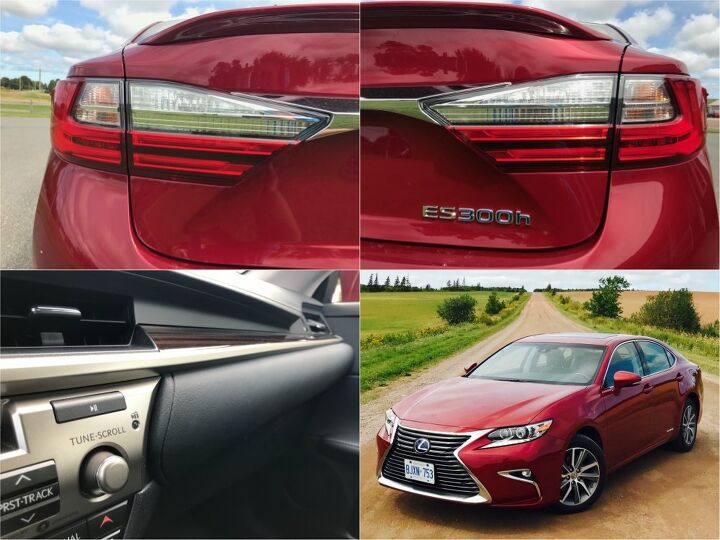Enough With the Negatives: What Do the Auto Industry's Good Panel Gaps Look Like?
We’re auto writers. By our very nature, we’re irritable complainers, apt to harp and carp. Yet while we enjoy a humorous headline, needling readers, and looking far into the future, you’ll more likely find us sharing photos of horrendous automotive disappointments on TTAC’s digital HQ, Slack.
Sometimes the disappointments are obvious and consequently publicized. Departed managing editor Mark Stevenson, for example, profiled a 2015 Ford Edge Titanium’s build issues in late 2015.
Panel gaps are one means of quantifying perceived quality. Industry observers and many customers use perceived quality to make educated guesses about future real quality. If a vehicle appears to be built well, surely it is. If a vehicle appears to be built poorly, how much worse is the quality of assembly under the skin?
This issue quickly became a topic among TTAC’s staff earlier today when associate editor Steph Willems shared a Reddit posting of a Tesla Model X with doors that don’t even come close to lining up. These kinds of images are shared on Twitter all the time. But rarely do we take time to consider the opposite end of the spectrum. Teslas often feature comically poor perceived quality, but how much better are other vehicles?
Fortunately, the manufacturer-supplied test vehicle visiting Prince Edward Island this week is an apt comparison, widely assumed to be among the most reliable vehicles known to mankind. If a Tesla Model X fails to live up to reasonable expectations, how much of a space is there between a Californian EV and a Japanese hybrid such as this Japan-built 2017 Lexus ES300h?
If there’s a car for which consumers expect to see perfection, the Lexus ES is the obvious candidate. It doesn’t sell based on superior performance or engaging dynamics. It’s not the most attractive luxury sedan. It’s not the least expensive luxury sedan. But Lexus manages to sell an average of 65,000 per year because people know exactly what they’re going to get. And if loyal ES buyers were to ever walk up to a next-generation ES in 2018 and see doors that didn’t line up or a misaligned badging or tilted taillamps, concerns about lasting quality would be made obvious in Lexus’ sales reports.
So, is the 2017 Lexus ES300h that TTAC will review next week a prime example of perfect panel gaps and peerless build quality? Or does that right-side taillamp’s trunklid portion appear a nanometer higher than it is on the rear fender?
[Images: © Timothy Cain]
Timothy Cain is a contributing analyst at The Truth About Cars and Autofocus.ca and the founder and former editor of GoodCarBadCar.net. Follow on Twitter @timcaincars.
More by Timothy Cain
Latest Car Reviews
Read moreLatest Product Reviews
Read moreRecent Comments
- Ltcmgm78 Just what we need to do: add more EVs that require a charging station! We own a Volt. We charge at home. We bought the Volt off-lease. We're retired and can do all our daily errands without burning any gasoline. For us this works, but we no longer have a work commute.
- Michael S6 Given the choice between the Hornet R/T and the Alfa, I'd pick an Uber.
- Michael S6 Nissan seems to be doing well at the low end of the market with their small cars and cuv. Competitiveness evaporates as you move up to larger size cars and suvs.
- Cprescott As long as they infest their products with CVT's, there is no reason to buy their products. Nissan's execution of CVT's is lackluster on a good day - not dependable and bad in experience of use. The brand has become like Mitsubishi - will sell to anyone with a pulse to get financed.
- Lorenzo I'd like to believe, I want to believe, having had good FoMoCo vehicles - my aunt's old 1956 Fairlane, 1963 Falcon, 1968 Montego - but if Jim Farley is saying it, I can't believe it. It's been said that he goes with whatever the last person he talked to suggested. That's not the kind of guy you want running a $180 billion dollar company.




































Comments
Join the conversation
Right now, Porsche has notably great build quality. Lately I've driven a 911 GT3 and a base Cayman, and ridden in two Macans and a Cayenne. All of these had notably even panel gaps and interior pieces that lined up at a 'how did they do that?' level. I'm lukewarm about their current lineup, but the level of fit and finish definitely soothes my OCD.
well in here (indonesia) people only care about reliability,functionality on car,they dont even care about part quality or even panel gaps